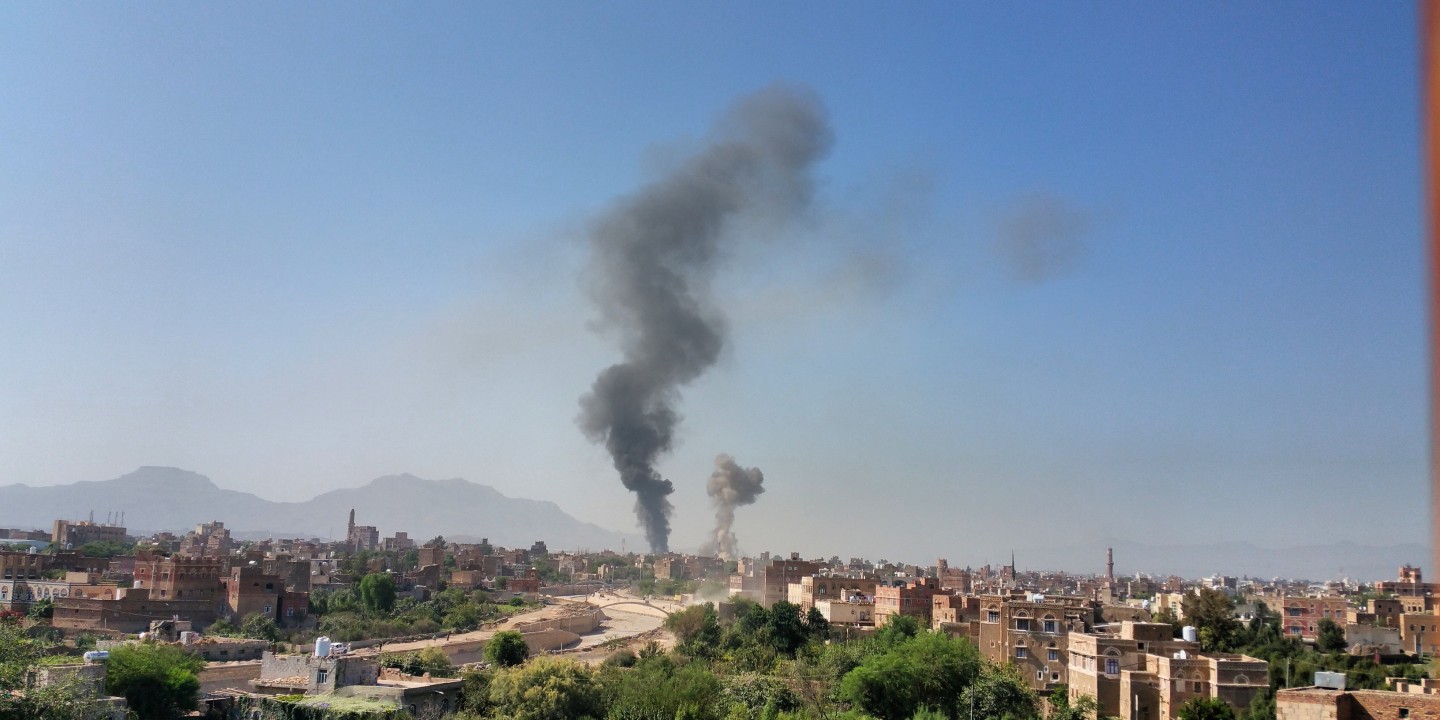Crisis in Yemen shaped by unique religious and political factors
How did Yemen arrive at this point?

Media coverage of the conflict in Yemen has often described it as a proxy war between Iran and Saudi Arabia. Or sometimes it’s called a Sunni-Shi’a conflict that’s primarily religious in nature, and therefore intractable.
What’s agreed upon is that both warring parties have impeded the delivery of humanitarian aid and committed human rights violations. A blockade by a Saudi-led coalition with U.S. support has tightened in the past year, preventing delivery of fuel, food, and medicine to ports of entry in the country.
Since the conflict began in 2015, at least 10,000 people have died. A new estimate by Armed Conflict Location and Event Data Project, cited by the Independent, places the death toll at more than 50,000. The conflict has also dealt a blow to the economy, harming infrastructure and limiting options for transporting goods.
Read our latest issue or browse back issues.
The United States has called for peace talks. Secretary of State Mike Pompeo said in a statement that the missile and drone strikes from Houthi-controlled areas on Saudi Arabia and the United Arab Emirates must stop. “Subsequently, coalition air strikes must cease in all populated areas in Yemen,” he said.
How did Yemen arrive at this point?
Politics as much as religion has been a significant factor in Yemen, and the roots of the conflict go back several decades. Yemen has never had a strong central government. Throughout its history, individuals relied on local leaders and communities for resolving disputes and distributing resources. Sometimes, that local community is a tribe—a distinct social group linked to a specific area or reflecting extended family relationships.
Shoqi Maktary, country director for Search for Common Ground, an international peacebuilding organization that has continued working in Yemen during the conflict, commented on the importance of working at the local level because of the tribal dynamic.
“The tribal system in Yemen is actually a stabilizing factor rather than a destabilization factor,” he said. “When the state is not present, the tribal system kicks in. If you are looking at Yemen now and identifying stability factors, areas where there is a stronger tribal presence are more stable than the other areas.”
Geographic divisions and unique religious identity are also key parts of Yemen’s history. Prior to its unification in 1990, Yemen was divided into what are commonly known as North and South Yemen. After the collapse of the Ottoman Empire in 1918, Sayyids, descendants of the Prophet Muhammad, held power in North Yemen. However, in 1962 after a military coup, the Sayyids lost power and were pushed out of politics.
The Sayyids, like approximately one-third of the country, practice a form of Shi’a Islam known as Zaidiyyah. Shi’ism developed early in Islamic history among those who looked to descendants of the Prophet Muhammad (rather than secular leaders) for authority after his death. However, Zaydis follow a different descendant of the Prophet. They “do not fall under the religious patronage of Iran, nor do they have the same cultural and spiritual links as some Shi’a communities elsewhere,” notes Minority Rights International.
While most Zaydis are in North Yemen, South Yemen is largely Sunni Muslim. However, until the escalation of the violence in 2015, there was little conflict between the two groups solely on the basis of religion. “Yemenis would pray in mosques belonging to the other sect—often simply going to the closest one,” Maktary said.
More important, perhaps, for South Yemen’s identity is its distinct political history. Nominally under British authority until 1967, South Yemen became the People’s Republic of Southern Yemen in 1967 and became aligned with the Soviet bloc.
Although Sunni-Zaydi or Sunni-Shi’a divisions were not a significant factor in Yemen at that point, they became important in the Middle East more broadly when the 1979 Islamic Revolution in majority-Shi’a Iran brought religious leaders into political power. In the 1980s majority-Sunni Saudi Arabia, which was already a regional economic and military power, began funding religious schools in other countries, including Yemen, to spread its version of Sunni Islam.
In 1990, North and South Yemen merged to form the Republic of Yemen, under the leadership of President Ali Abdullah Saleh, former president of North Yemen. As the south had aligned itself closely with the Soviet Union, which had dissolved, it had few options for political survival.
Yemen, as a newly unified country, struggled with political and geographic tensions. The fact that the Sayyids in northern Yemen had lost power fueled the rise of an insurgent movement in the 1990s led by Hussein Badreddin al-Houthi, a member of a prominent Sayyid family. The movement, commonly known as the Houthis, criticized President Saleh for corruption and for engaging with the United States and Saudi Arabia, which they saw as foreign interference.
The Houthis and the Yemeni government had multiple skirmishes from 2003 to 2010, and several Houthis were imprisoned. Saudi Arabia supported President Saleh in suppressing the Houthis. In 2003, the Houthis adopted the name Ansar Allah, or supporters of God, emphasizing a more Islamic identity in the wake of the U.S. invasion of Iraq.
Yemen’s central government, which continued to be led by President Saleh, also had tense relations with Yemenis living in southern Yemen. Many southerners felt that they were economically marginalized and that their standard of living had declined since unification. Demonstrations beginning in 2007 fueled a southern separatist movement.
In 2011, large-scale protests began in Yemen’s capital, Sana’a, over economic conditions and criticism of Saleh’s rule. Much of the population lived on less than $2 per day, and corruption and nepotism frustrated many citizens. A year later, President Saleh stepped down and handed the presidency over to his former vice president, Abdrabbuh Mansour Hadi, through an agreement worked out by the Gulf Cooperation Council, a regional political and economic body that includes Saudi Arabia and other Gulf Arab states.
Hadi’s hold on power proved tenuous. In 2014, controversy over an increase in the price of fuel led to antigovernment protests, with strong participation from the Houthis. In September 2014, the Houthis took over the Yemeni capital of Sana’a and began moving south. President Hadi fled to Aden, in the south.
Several months later Saudi Arabia, with a coalition of other Arab countries and U.S. support, began air strikes against Houthi targets; the Houthis responded by firing missiles at Saudi Arabia. President Hadi has supported Saudi involvement in order to keep the Houthis out of power. U.S. ambassador to the UN Nikki Haley and military officials have also accused Iran of supporting the Houthis.
While the conflict is generally described as one between the Hadi-Saudi coalition and the Houthis, other parties have also stepped in. Former president Saleh (and many of his supporters), previously an enemy of the Houthis, aligned with them from 2014 to 2017 in a bid to come back to power. In 2017, Saleh reversed course and said he was open to dialogue with the Saudis. That “played poorly with some of his base, who oppose the Houthis but Saudi military actions in Yemen even more,” wrote April Longley Alley, former project director for the International Crisis Group, in a commentary.
Similarly, some southern separatists supported the Hadi-Saudi coalition against the Houthis but are not closely aligned with the coalition. Final resolution of the conflict will depend on the involvement of more than the two main parties.
“A political solution is now even more critical,” said the international humanitarian group CARE in a statement. “The ongoing violence is making humanitarian access to those most in need extremely challenging.”
In recent months, prominent activists and politicians such as Sen. Elizabeth Warren asked the United States to reconsider its support for the Saudi-led coalition in order to further the peace process.
Key to a political agreement will be support on the ground.
“Legitimacy is won at the local level, by listening and engaging with people on the ground, delivering services, and creating buy-in to the wider national system,” wrote Peter Salisbury in commentary in the New Republic.
Maktary echoed that point in discussing Search for Common Ground’s work in Yemen.
“We cannot wait for a top-down peacebuilding process because the conflict influences the social fabric,” he said. “We are trying to maintain a local, functional structure, that a large-scale peacebuilding process can land on. Even if you have an agreement, it will not stick without local support.”
Disclosure: Strikwerda worked at Search for Common Ground from 2008 to 2012.
A version of this article appears in the print edition under the title “Crisis in Yemen shaped by unique religious factors.”





